Lecture 7 Energy, Environment, and Human Health
Gang He
October 3, 2022
Sample analytic questions
- What are the environmental impacts of a fossil power plant?
- How much water could you save if you replace all water cooling plants with air cooling?
- What are the human health impacts of energy?
- What are the co-benefits of energy transitions?
Energy system environmental and health impacts
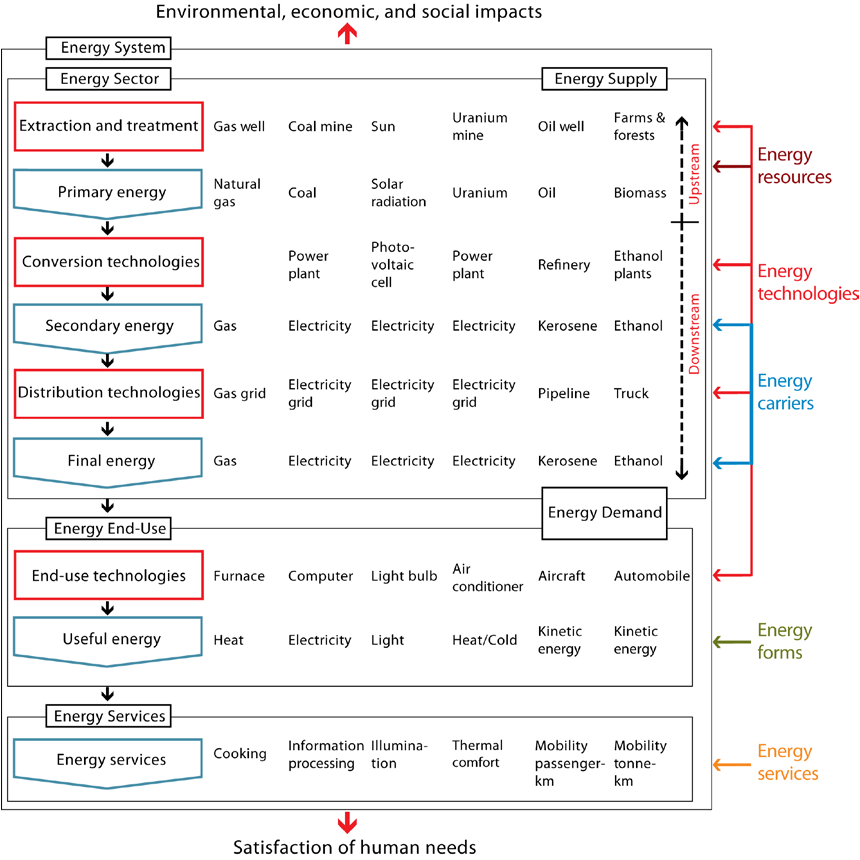
System impacts
- Air pollution
- Health
- Water
- Land use
- Ecosystem
- Climate change
Source: IIASA, Energy Primier
Example sources of energy related air pollution

Source: IEA (2016a)
Pollution by energy sector
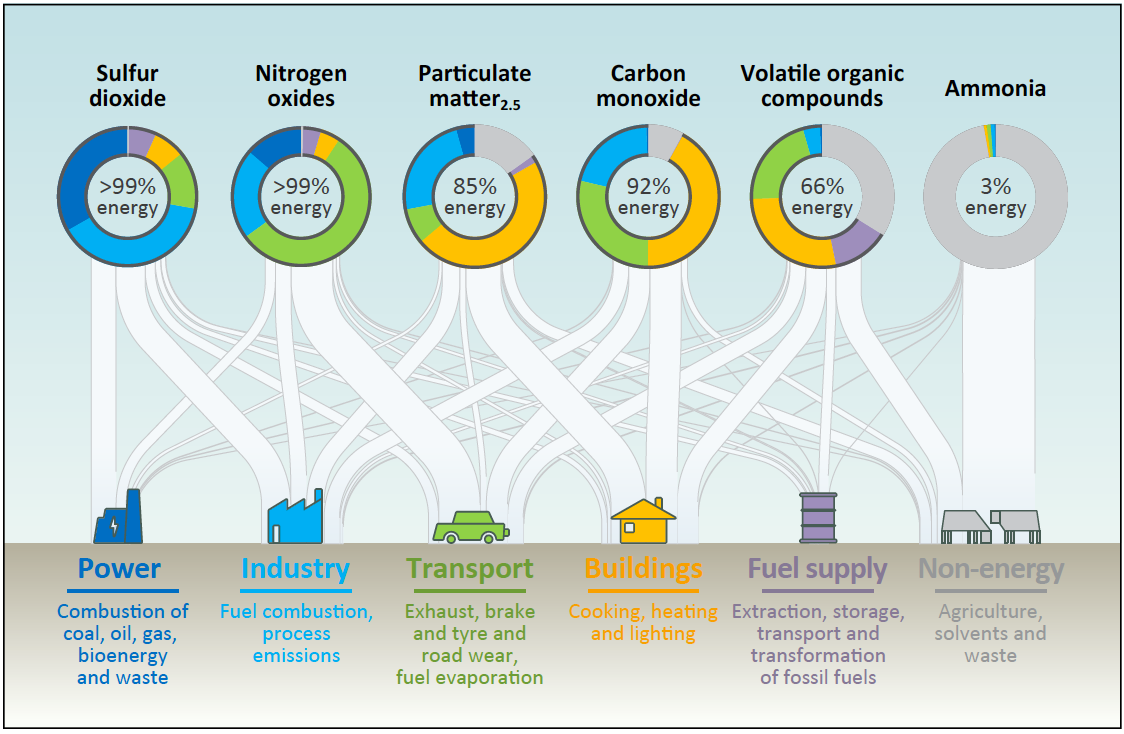
Source: IEA (2016a)
Air pollution and human health analytic framework
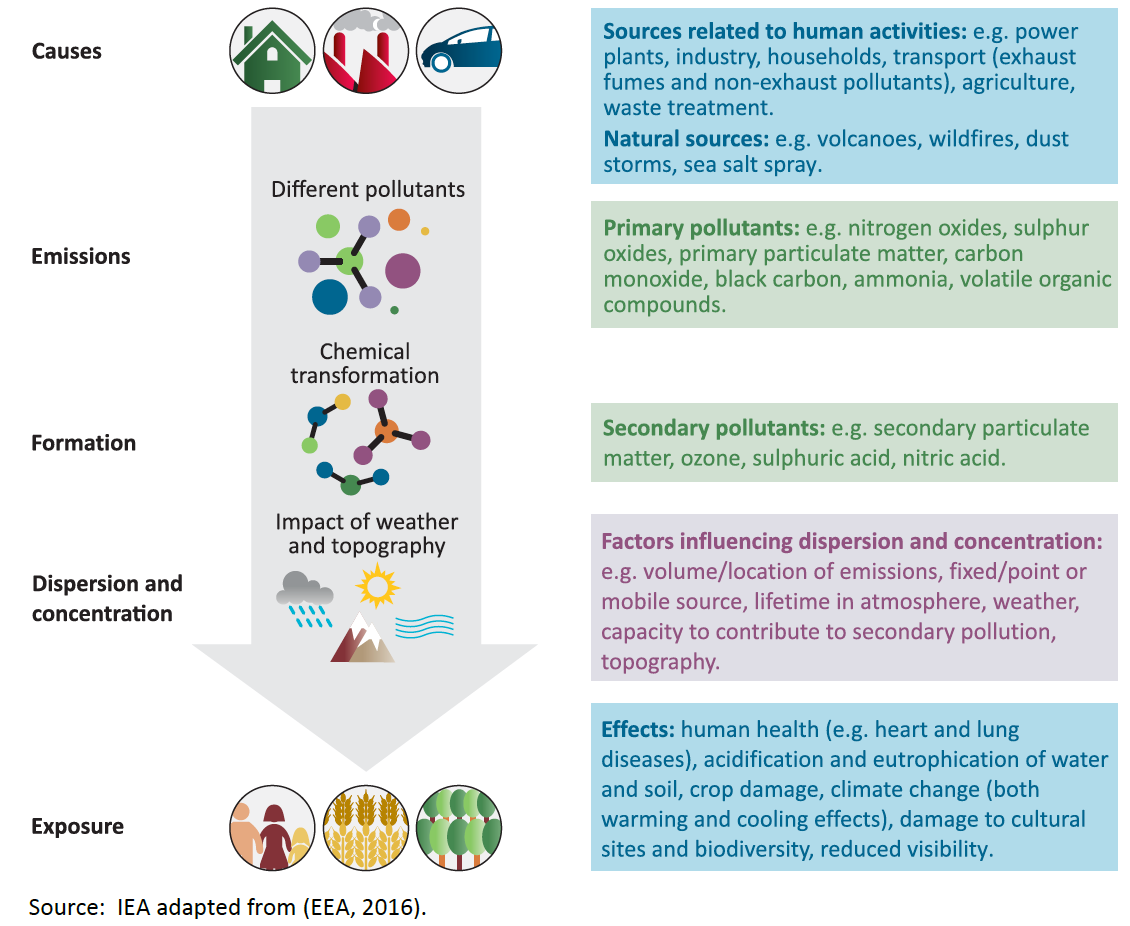
Source: IEA (2016a)
Energy related PM emissions by sector and region
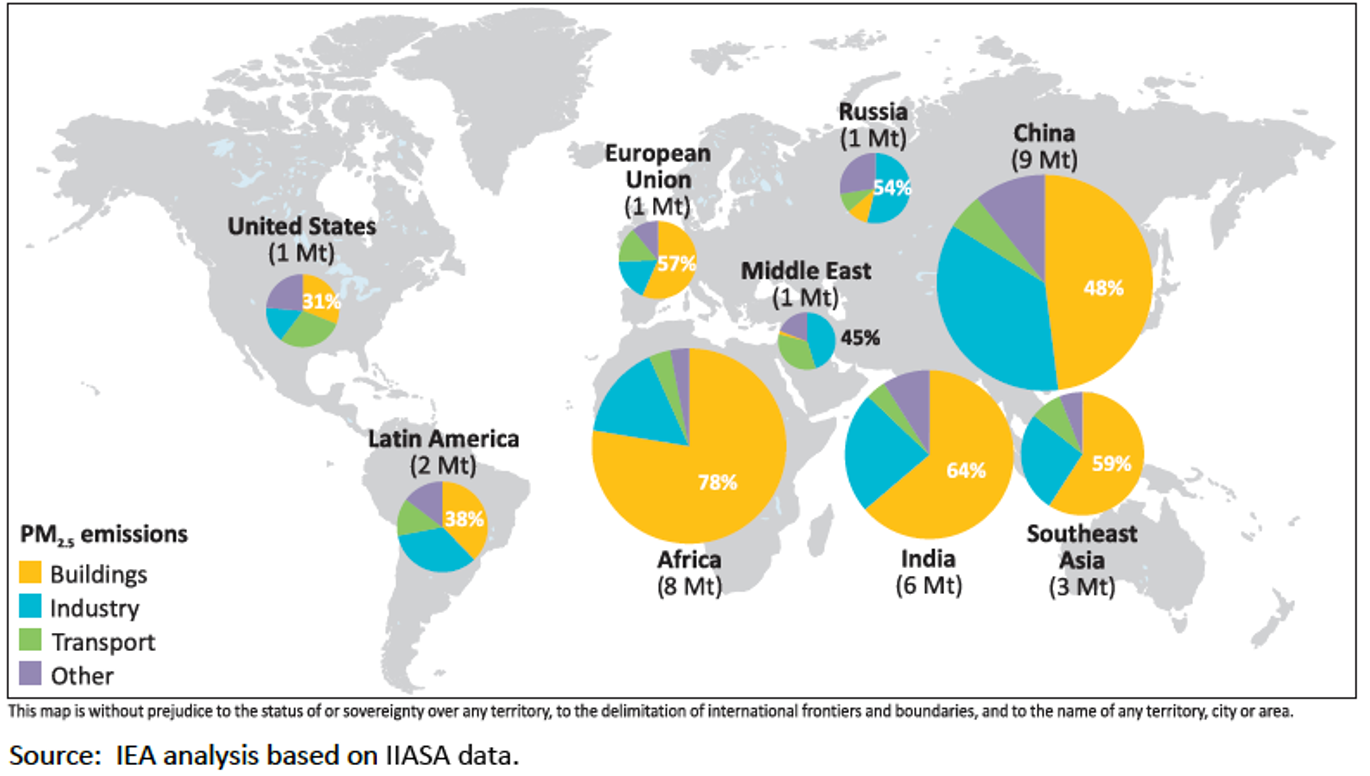
Source: IEA (2016a)
Air pollution standards (AQI)

Source: IEA (2016a)
Typical power plant emission control system
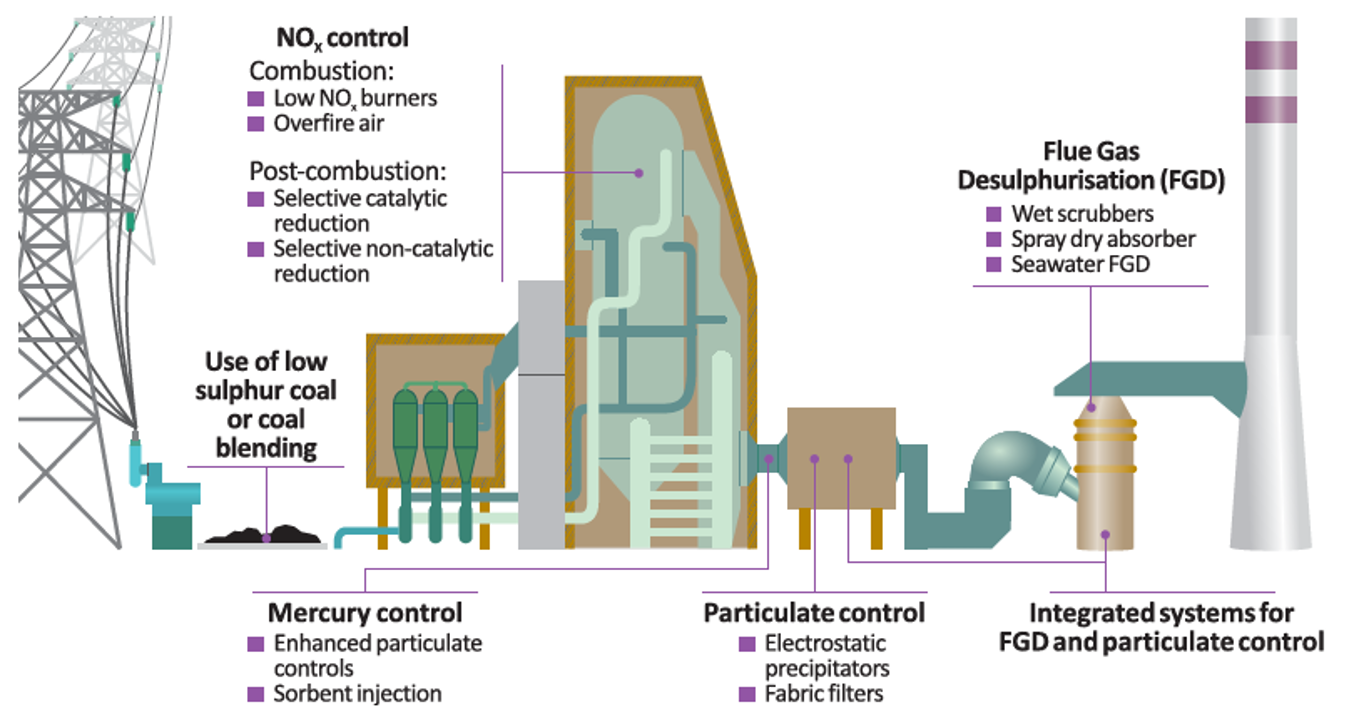
Source: IEA (2016a)
Pollution mitigation technologies and efficiencies
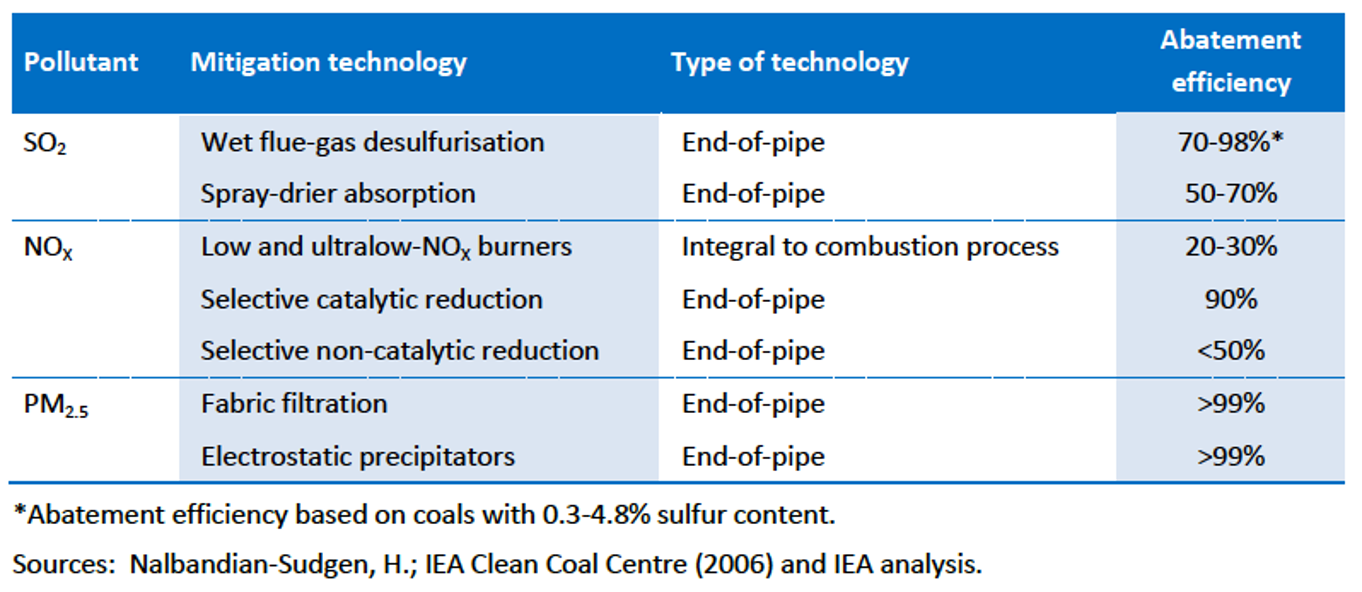
Source: IEA (2016a)
Outdoor air pollution and premature mortality
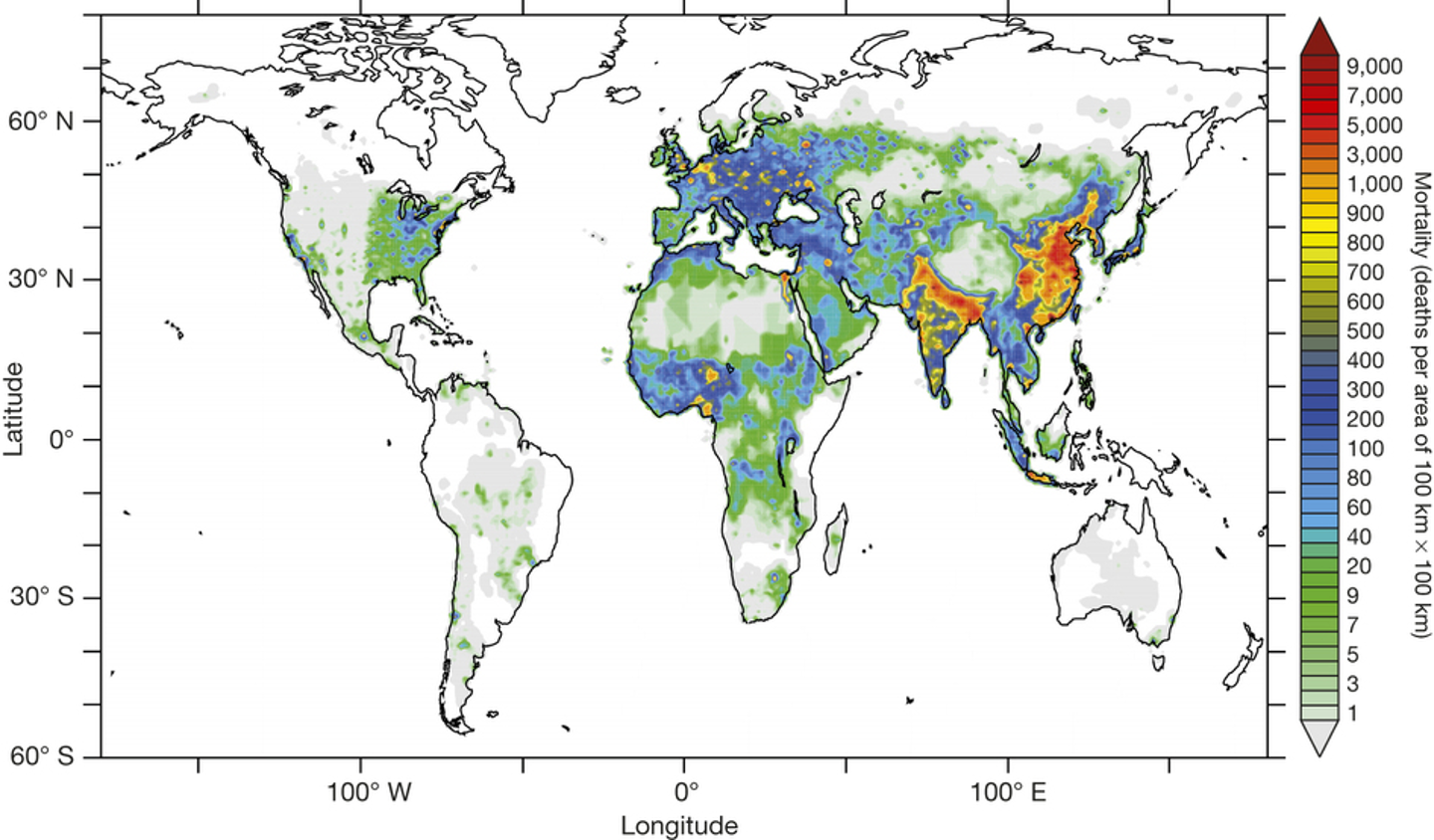
Source: Lelieveld et al. (2015)
Trade, air pollution, and premature mortality
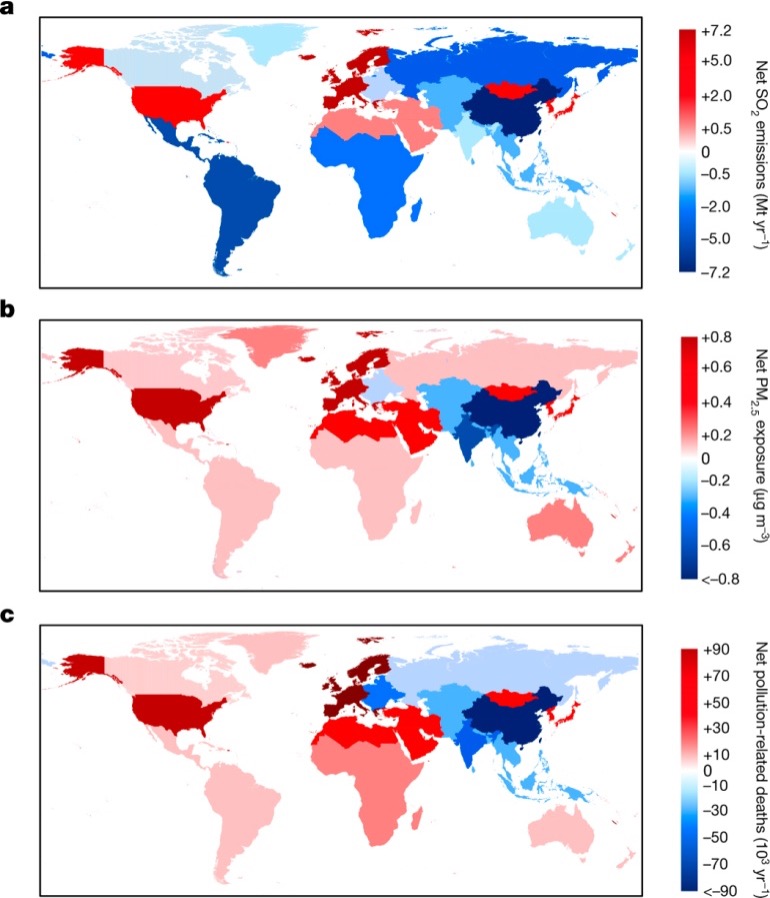
Source: Q. Zhang et al. (2017)
Energy sector accounts ~1/8 global water withdrawal
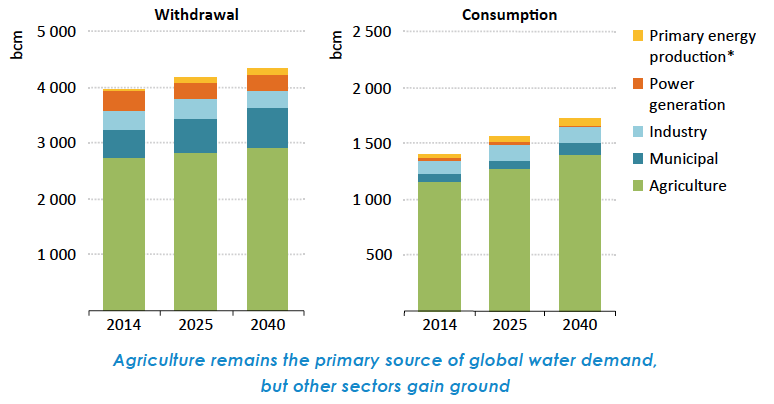
Source: IEA (2016b)
Water withdrawal vs. water consumption
- Withdrawal is the volume of water removed from a source
- Consumption is the volume of water withdrawn that is not returned to the source, i.e. it is evaporated or transported to another location.
- Discharge is the volume of water withdrawn that is returned to the source, often degraded by use (altered physically or chemically) and impacting water quality.
- Water withdrawals are, by definition, always greater than or equal to consumption and are, therefore, the first limit approached at an energy production facility when water availability is constrained.
- Consumptive use reduces the amount of water available to satisfy demands downstream and is an important consideration where water resources are strained to meet the needs of all users.
Renewables save water
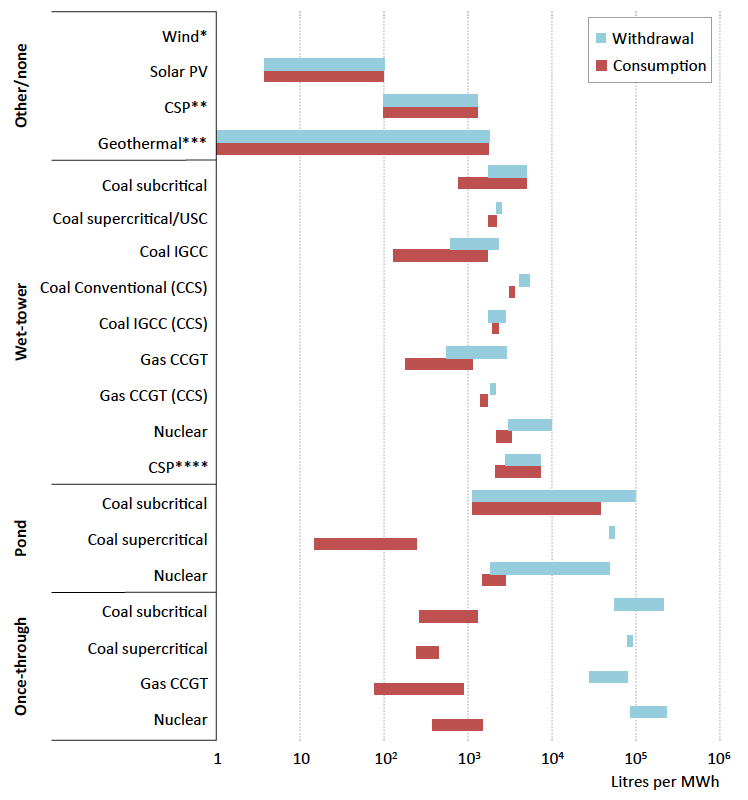
Source: IEA (2016b)
Dry cooling makes a big difference

Water-energy-carbon nexus
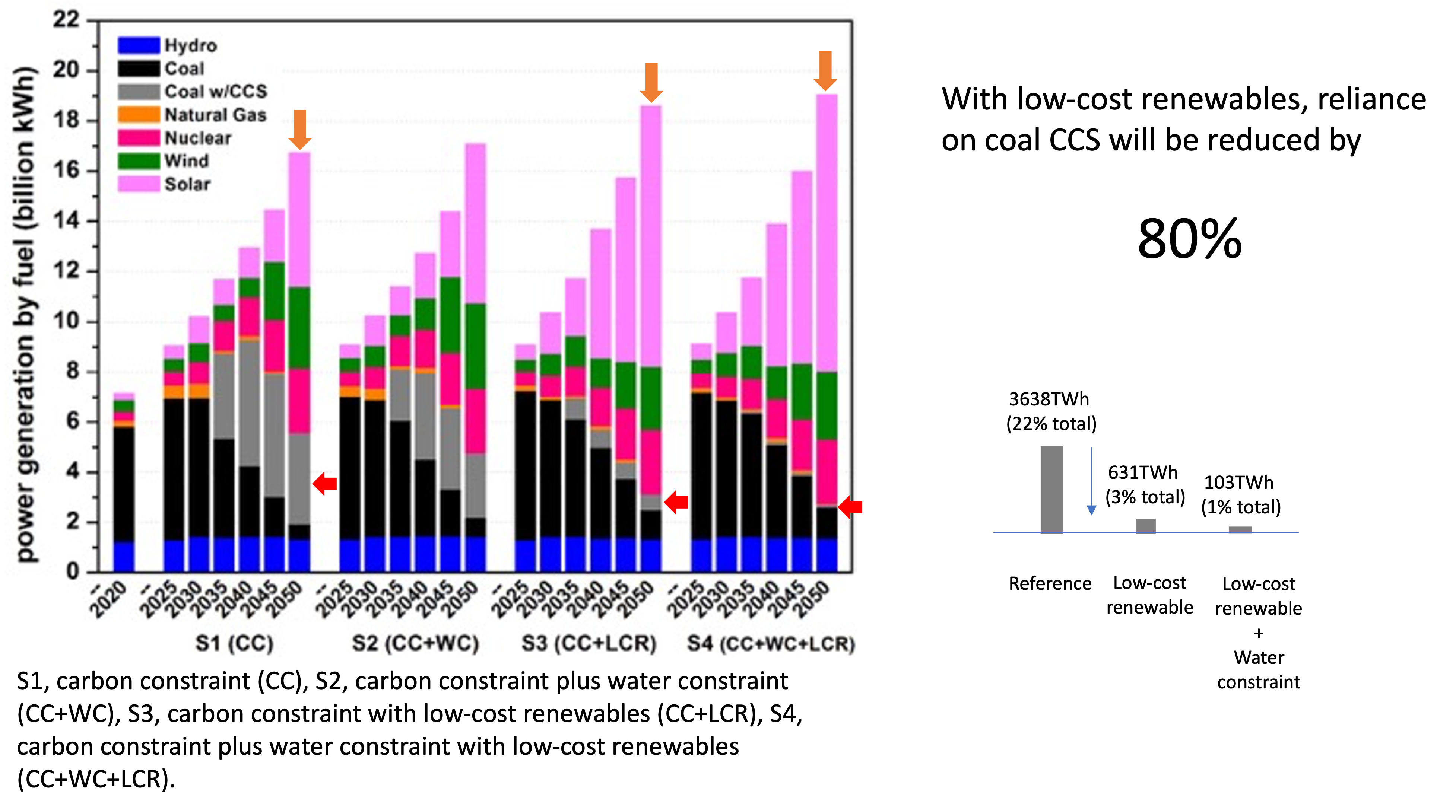
Source: C. Zhang et al. (2021)
Land use intensity

Source: Loveringa et al. (2022)
Multiple uses of land, co-benefits!
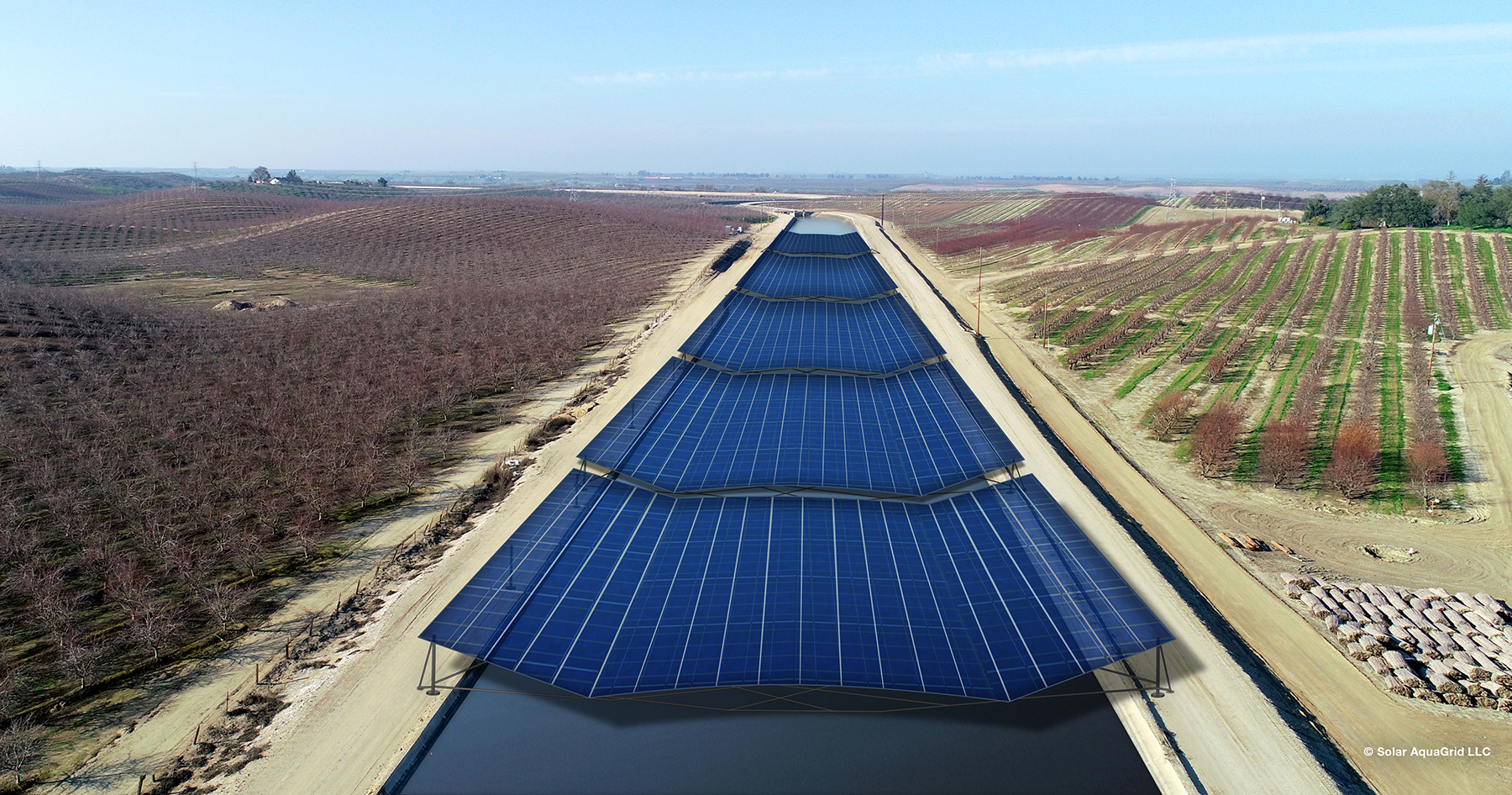
Summary
- Environmental and health impacts are the externalities of energy systems
- Energy-air-pollution-human health framework of analysis
- Energy-water-carbon nexus
- System impacts show the constraint in systems modeling
References
IEA. 2016a. “Energy and Air Pollution: World Energy Outlook Special Report 2016.” https://www.iea.org/reports/energy-and-air-pollution.
———. 2016b. “Water Energy Nexus Excerpt from the World Energy Outlook 2016.” https://www.iea.org/reports/water-energy-nexus.
Lelieveld, Jos, John S Evans, Mohammed Fnais, Despina Giannadaki, and Andrea Pozzer. 2015. “The Contribution of Outdoor Air Pollution Sources to Premature Mortality on a Global Scale.” Nature 525 (7569): 367–71. https://doi.org/10.1038/nature15371.
Loveringa, Jessica, Marian Swaina, Linus Blomqvista, Rebecca R Hernandezb, and Jessica Lovering. 2022. “Land-Use Intensity of Electricity Production and Tomorrow’s Energy Landscape.” PLoS ONE 17: 7. https://doi.org/10.1371/journal.pone.0270155.
Zhang, Chao, Gang He, Josiah Johnston, and Lijin Zhong. 2021. “Long-Term Transition of China’s Power Sector Under Carbon Neutrality Target and Water Withdrawal Constraint.” Journal of Cleaner Production 329: 129765. https://doi.org/10.1016/j.jclepro.2021.129765.
Zhang, Qiang, Xujia Jiang, Dan Tong, Steven J Davis, Hongyan Zhao, Guannan Geng, Tong Feng, et al. 2017. “Transboundary Health Impacts of Transported Global Air Pollution and International Trade.” Nature 543 (7647): 705–9. https://doi.org/10.1038/nature21712.